Garlic Asparagus Frittata with Ricotta is a delicious recipe to whip together for a gourmet lunch, a weekend brunch or a light dinner. You’ll only need a couple ingredients to make it, all nutritious and delicious.
What to expect: when you bite into this late-Spring inspired recipe you’ll taste the fluffiness of the eggs, the sweet and bitter taste of the asparagus, and the milk richness of the ricotta. Imagine all of that in a single happy bite.

This is simply the result of cracking some eggs in a bowl, usually at least two, beating them with a fork and, later cooking that mixture in a pan with or without oil or butter.
Why do we need to beat the eggs to make it?
Beating the eggs releases the bond and hold of the protein and allows the egg to expand into a foamy liquid mixture.
You’ve probably noticed before that the more you beat them the more they foam; that’s why we use an electric mixer to foam and mount the eggs for baking. That’s because we are manipulating the protein and taking advantage of the effect that air has on them.
Fascinating, right?
Many ask this question: “Is frittata Italian”?
And the answer is of course it is.
The name frittata derives from the verb to fry, which in Italian is friggere. Something fried in Italian is called fritto or fritta, depending on the gender of the noun. The ending of the word – ata – is a common grammatical suffix used for turning verbs into nouns.
The next question on your mind is probably this one “Who invented frittata?”.
Unfortunately, like many other old food staples, it’s very difficult to say for sure.
From my research I can conclude that the Arabs might have brought their eggs cooking customs to Italy, and the Italians picked those up and turned them into the frittata. It’s likely similar to what happened with the polpetta.
The first written appearance occurred in the famous old book “Del re Coquinaria”, written by the Roman chef Marco Gavio Apicio and first published in 1498.

The classic Italian frittata doesn’t include dairy other than the eggs. It’s simply a mixture of beaten eggs, seasoned with salt and pepper and fried in a pan with or without oil or butter.
That’s the base to make a frittata. Most savoury Italian frittatas also include some grated parmesan and parsley.
To that you can add vegetables, as well as switch the herbs and use either fresh or dry, add more cheese, another protein, and so on.
However, if we look at the first publication featuring the frittata (the book Del Re Coquinaria), the recipe includes 3 main ingredients: eggs, milk and oil.
What does this mean then?
It means that the use of dairy in frittata is not a must but is a very common ingredient in many recipes.
I would personally think that in the North of Italy more people would use milk to make frittata. In reality, if you search for these: frittata torinese, piemontese, friulana on Google, you get a mixed result. There are recipes featuring milk and a larger number without it.
When searching for frittata siciliana, pugliese, calabrese, you can see that almost none of the recipes include milk.
This somewhat proves my theory.
In any case, you can feel free to add dairy or not to your frittata, although adding it it’s not necessary.
I do personally add yogurt when I am making pancakes to make them fluffier and thicker. So if that’s something you are wanting from yours, adding dairy can definitely help you achieve it.
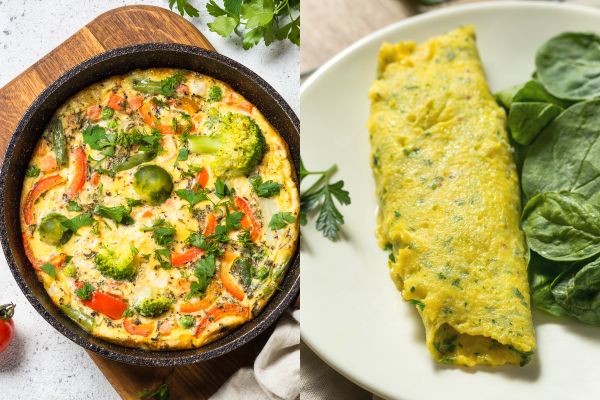
These can sound as the same thing since they are prepared very similarly, but they are quiet different.
First of all frittata is Italian while omelette is a French culinary creation.
Let’s start by looking at why they call it omelette.
Apparently, omelette derives from the word alemette which comes from Latin lamella, this refers to a thin and small metal plate.
You might find it difficult to pinpoint a connection between the two, but it’s likely that it’s due to the thin size of an omelette.
What about the recipe? Do French make omelettes the same way as Italians make their frittatas?
The first key difference is very obvious. The French fry their omelettes in butter, not oil.
In terms of ingredients, the omelette is very similar to its Italian cousin. It’s made with eggs, seasoning and herbs. Often, French only use the egg white to make an extra fluffy omelette.
The other key difference is the way it is cooked. An omelette is only cooked quickly on one side so it’s left soft and creamy, whereas the Italian version is flipped and cooked on both sides in a pan, or sometimes in the oven.
The frittata cook time can extend to up to 30 minutes, especially if baked, whereas an omelette should only take 5 to 10 minutes to make.
Back to the Italian version now. How shall we fill this delicious breakfast, brunch, and lunch favourite?
The options are really endless, but as you can imagine the Italian favourites are very simple.
If you’d like yours a little more complex, here are a few ideas:
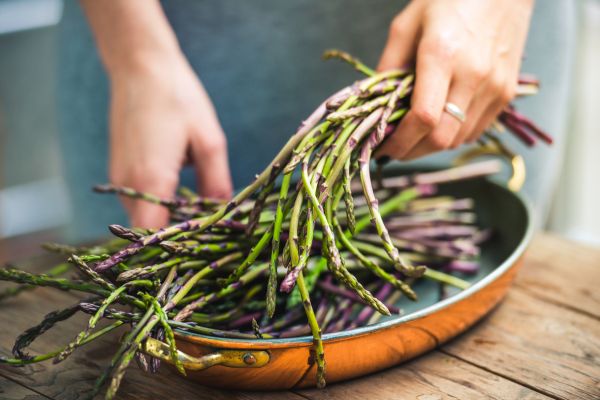
Our recipe includes asparagus, a delicious vegetable that’s in season right now when we are publishing this.
If you are wondering when is asparagus season in Ireland, we suggest checking out the Bordbia website. Its season starts at the end of April and can last up to the end of June.
You can find green asparagus, which is what we are using, white asparagus, purple asparagus, wild asparagus and a few other types.
Whichever you use, you can opt to cook this vegetable in multiple ways.
Oven asparagus – an easy and hands off method
Roast asparagus – involves the same process as cooking it in the oven but you’ll probably want to cook it at a higher temperature so that the final result is crispier.
Fried asparagus – this method is more likely to be used when you want to coat the vegetable with a batter and then fry it to get crispy and bready.
Pan cooked asparagus – is the simplest and quickest way to cook asparagus, and is great if you don’t mind your asparagus having a bite rather than being very tender.
Boiled asparagus – the best method for getting a very soft, even mushy, result.
If you are looking for the best way to cook asparagus to keep nutrients, steaming is the way to go.
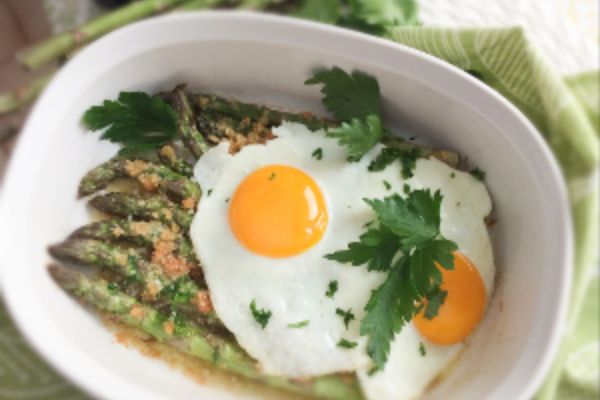
This vegetable is a great one to pair with eggs, and you don’t need to make a frittata to enjoy it. When you are in a rush, you can simply pan fry it and and serve it with fried eggs.
Baked Asparagus Milanese style is another delicious way to enjoy this flowering green.
Have a look at these recipes for cooking asparagus from our archives.
After this long asparagus and eggs talk, I think it’s time to crack a joke or two :). Here they come.
The definition of asparagus: “A bean (or better a vegetable) with aspirations of becoming a paintbrush” by Anonymous.
“What did Asparagus say to Eggs Benedict? – Happy Hollandaise, of course!” by Anonymous.
Let’s conclude with a beautiful Sicilian saying: “Asparagi e funghi insegnano l’umiltà al cuoco”.
This translates to asparagus and mushrooms teach chefs to be humble. I believe the meaning is that however great a chef is, he must not forget that he wouldn’t be that great if it wasn’t for the ingredients. That’s not to say that a chef is not an artist with a great talent for culinary creativity but the stars are always the ingredients, especially ones that are grown by nature.
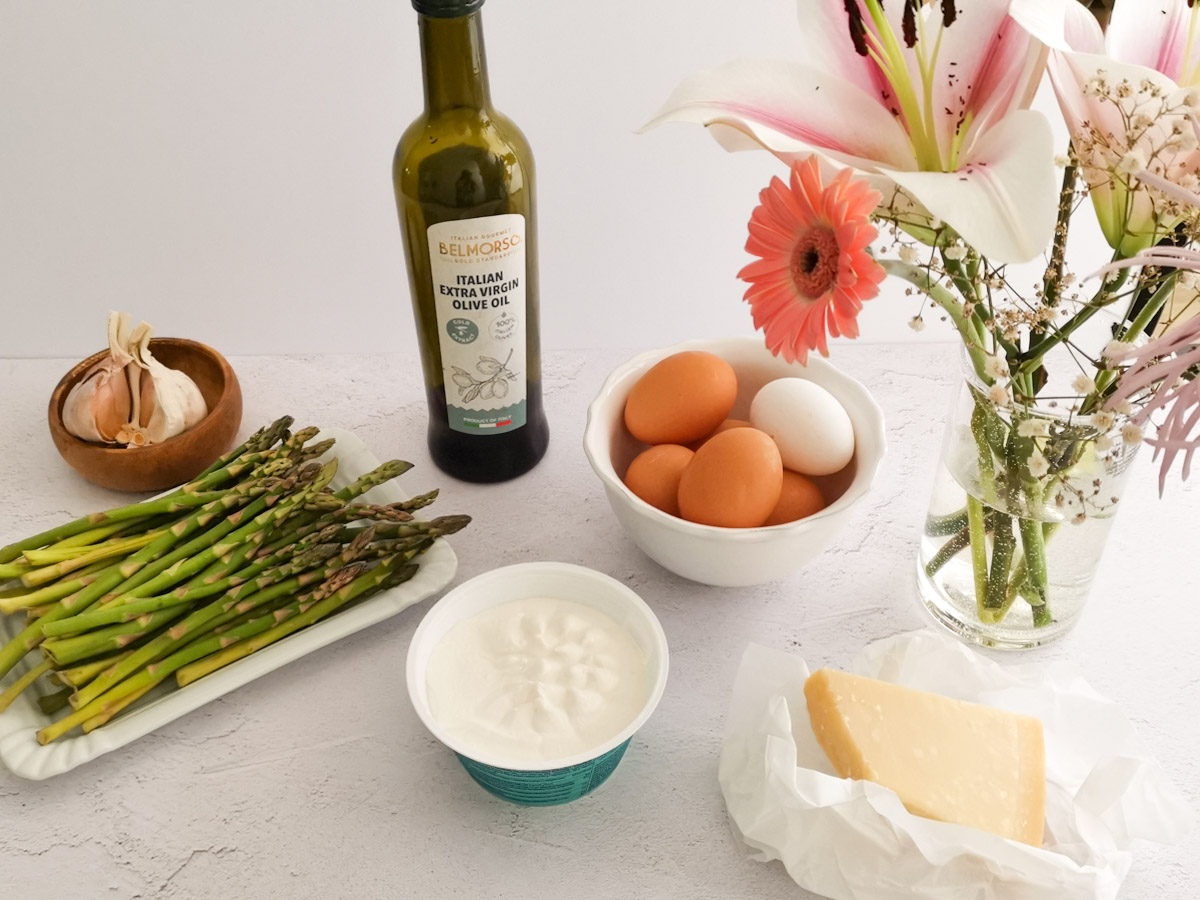
Below I am sharing my delicious Italian recipe featuring eggs, the veg paintbrush (haha), and ricotta.
You have the option to print it out or follow the steps on your device.
As always, when cooking Italian food, make sure you are using a high quality extra virgin olive oil like Belmorso EVOO.
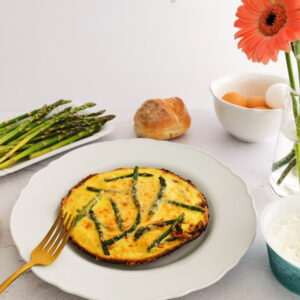
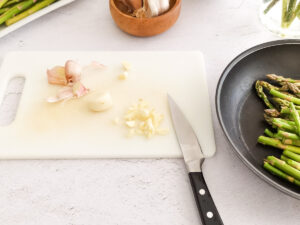

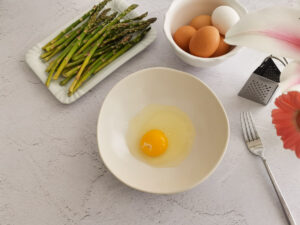

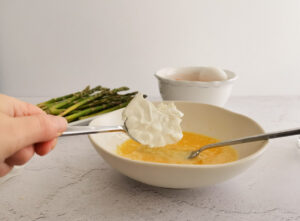
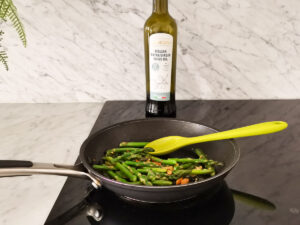
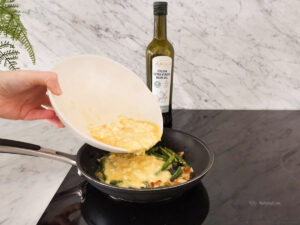

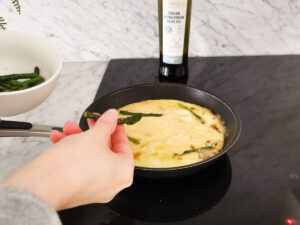
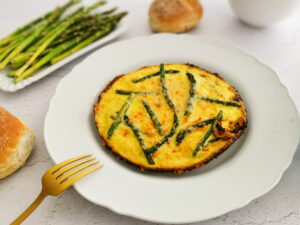
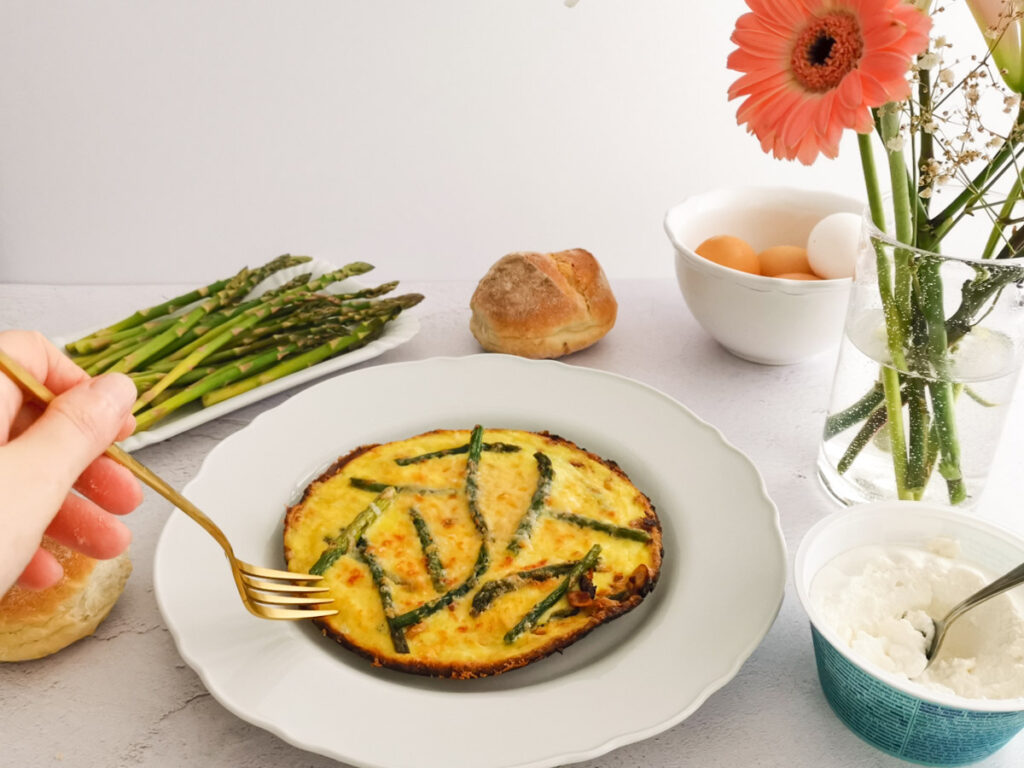
If you’d like to tweak this recipe, here are a few suggestions.
You can skip the ricotta and just use the parmesan if you want a lighter less dairy-rich meal.
You can replace the spring onion with a leek or two for a sweet and weaker onion taste.
If you want to add more vegetables, potatoes are the perfect match.
Smoked salmon is delicious enjoyed with this green.
If you don’t like smoked salmon but would like to add some extra protein, you can include your favourite ham instead.
Whether you are trying to cut the dairy, the calories, or both, this frittata will still taste very good if you skip the cheese.
Whichever way you choose to make yours, you can enjoy it in many different ways. Here are 3 suggestions.
If you are a ricotta lover, I am sure you’ll appreciate these recipes.
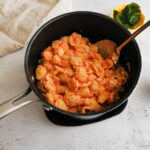
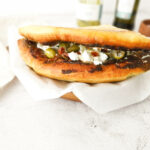


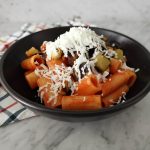
Share in the comments which of the above recipes is calling your name the most.